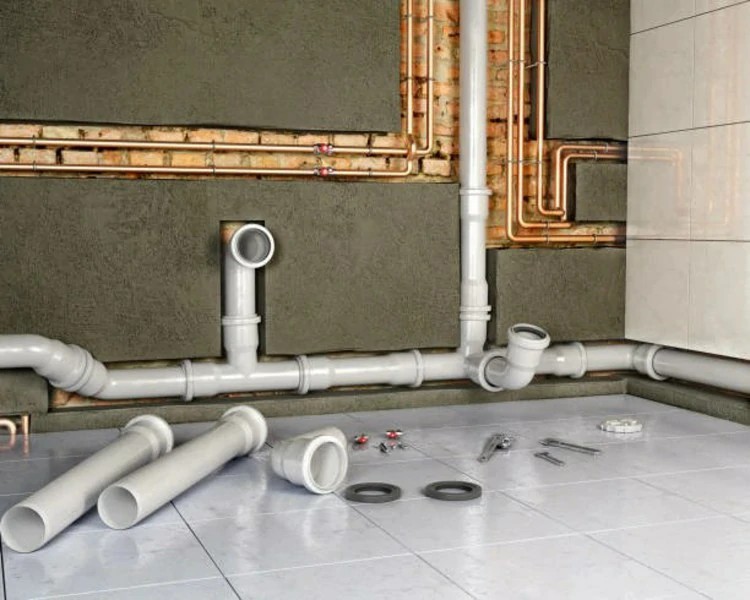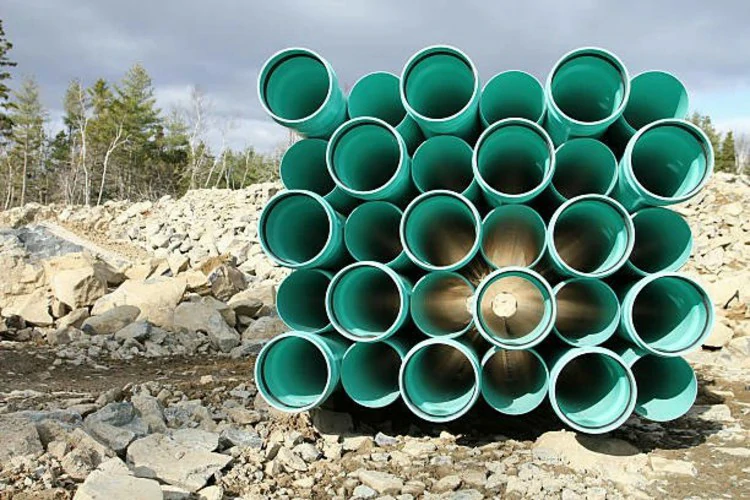Introduction
In the realm of plumbing, the choice of piping materials is a critical decision that impacts the efficiency and longevity of a plumbing system. PVC (Polyvinyl Chloride) and CPVC (Chlorinated Polyvinyl Chloride) are two commonly used materials, each with distinct properties. This article aims to navigate the differences between PVC and CPVC, providing insights into their characteristics, applications, and considerations for plumbing projects.

1. PVC Plumbing: Unveiling the Characteristics and Applications
1.1 Understanding PVC Composition and Properties
PVC, or Polyvinyl Chloride, is a synthetic polymer known for its versatility and durability. In the context of plumbing, PVC pipes are widely used for various applications due to their non-corrosive nature, affordability, and ease of installation. The composition of PVC includes vinyl chloride monomers, and the polymerization process results in a rigid material suitable for plumbing systems.
1.2 Versatility in Residential and Commercial Plumbing
PVC plumbing finds extensive use in both residential and commercial settings. Its affordability and adaptability make it a popular choice for water supply lines, drainage systems, and venting. PVC pipes are available in various sizes and configurations, allowing for customization to suit specific plumbing needs. The smooth interior surface of PVC pipes facilitates efficient water flow, minimizing the risk of clogs and blockages.
1.3 Key Advantages of PVC in Plumbing
The advantages of PVC in plumbing lie in its corrosion resistance, lightweight nature, and cost-effectiveness. PVC pipes are immune to rust and decay, ensuring a long lifespan and reduced maintenance requirements. Their lightweight design simplifies transportation and installation, making PVC a practical choice for plumbing projects where efficiency and budget considerations are paramount.
2. CPVC Plumbing: Exploring Enhanced Properties and Applications
2.1 The Evolution of PVC to CPVC for Plumbing
CPVC, or Chlorinated Polyvinyl Chloride, represents an evolution of PVC with enhanced properties. The chlorination process involves the introduction of chlorine to the PVC polymer, resulting in a material with increased heat resistance and improved suitability for hot water applications. CPVC pipes retain the rigidity of PVC while offering additional benefits.
2.2 Hot Water Applications and Temperature Resistance
One of the primary distinctions between PVC and CPVC lies in their temperature resistance. While PVC is suitable for cold water applications, CPVC can withstand higher temperatures, making it ideal for hot water distribution systems. CPVC pipes maintain their structural integrity at temperatures above those recommended for standard PVC, providing a reliable solution for residential and commercial hot water plumbing.
2.3 CPVC in Residential Fire Sprinkler Systems
The enhanced fire resistance of CPVC makes it a preferred choice for residential fire sprinkler systems. CPVC pipes have the ability to withstand exposure to high temperatures without compromising their structural integrity. This property, combined with the ease of installation and cost-effectiveness, positions CPVC as a reliable material for fire protection in residential buildings.
3. Considerations in Choosing Between PVC and CPVC for Plumbing Projects
3.1 Application-Specific Requirements
The choice between PVC and CPVC in plumbing projects often boils down to the specific requirements of the application. PVC remains a cost-effective and practical choice for cold water applications, drainage systems, and venting. On the other hand, CPVC is well-suited for projects where hot water distribution, enhanced temperature resistance, and fire safety are paramount considerations.
3.2 Cost Considerations and Budget Constraints
Cost is a significant factor in any plumbing project, and the choice between PVC and CPVC should align with budget constraints. PVC, being more economical, may be preferable in projects where hot water applications are not a primary concern. CPVC’s enhanced properties come with a slightly higher cost, but the investment may be justified in projects with specific temperature requirements or fire safety considerations.
3.3 Building Codes and Regulations
Navigating building codes and regulations is essential when choosing between PVC and CPVC. Local codes may dictate the type of piping material allowed for specific applications. It’s crucial to be aware of and adhere to these codes to ensure compliance and the overall safety of the plumbing system. Consulting with local authorities or plumbing professionals can provide guidance on the appropriate choice based on regulatory requirements.
Conclusion
In the realm of plumbing, the choice between PVC and CPVC involves a careful consideration of the project’s specific needs and requirements. PVC, with its versatility and affordability, is well-suited for various plumbing applications. CPVC, with enhanced temperature resistance and fire safety properties, excels in projects demanding hot water distribution and increased safety measures. Navigating the differences between PVC and CPVC allows plumbing professionals and homeowners to make informed decisions, ensuring the success and longevity of plumbing systems.
Contact:
IFAN is a manufacturer with 30 years of experience, specializing in plastic pipes, fitting, and valves in China. If you are interested in IFAN’s copper valves, PPR valves, pipe, and fitting, feel free to contact us. IFAN provides various standard pipes to meet your specific needs. Click the link below to explore IFAN’s diverse, cost-effective valve products, as well as related pipeline system products.
We will reply your email or fax within 24 hours.
You can call us at any time if there is any question on our production.
For more information,pls visit our webside https://www.ifanplus.com/
Pls Mailto: [email protected]






